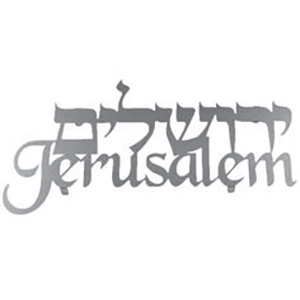
And Malkitzedek, king of Salem, brought forth bread and wine (Bereishis 14:18)
The significance of Malkitzedek, the high priest, bringing forth bread and wine to Avraham, who had just returned from war was, on a granular level, twofold (see Rashi). First, it was common to eat a sumptuous meal following battle since it replenished the strength of those weary from combat. Second, it served as a rectification between the two warring parties, a bridging of the divide, since Avraham had killed descendants of Malkitzedek who challenged him in battle, namely King Kedarla’omer of Ailam. This passage goes a little deeper since Malkitzedek was in fact Shem, the son of Noach (Masechet Nedarim 32b). Bereishis Rabbah 43:6 (see also Baal Haturim) learns this from inversing the first two letters of Melech Shalaim, which spells out the name Shem, the ancestor to Avraham—nine generations his senior! Thus, the meeting between Avraham and Malkitzedek/Shem, and the message that Chazal extract from this seemingly innocuous dialogue, is one that will have a powerful and timeless effect on the future state of the Jewish people, and Yerushalayim in particular.
I recall hearing a shiur from Rav Mansour that provided the following gloss on this particular conversation between these two great leaders. When work and acts of chesed compete with Torah learning there is occasional divide and perhaps two common approaches. There is one position that welcomes chesed and work but cannot find sufficient time for Torah learning. There is a second approach that emphasizes Torah learning to the limitation of chesed and work. In other words, some may learn heavily in their youth and then retire from learning when they have reached a milestone of advanced age or completion of a particular goal, i.e., completing Shas, focusing strictly instead on chesed opportunities. Conversely, others in their youth may find themselves too involved in work and chesed to allocate ample time for learning. In a similar way, bread, which is comparable to youth, is best enjoyed when it comes directly out of the oven, fresh and immediate. Wine, on the other hand, is best enjoyed and handsomely appreciates in value as it ages. (Think, by extension, the cost of a 60-year Macallan.) Hence, Shem was sending a subtle yet direct message. “Avraham, you are so busy performing chesed, acts of kindness, when do you ever learn Torah?” Avraham returned with a similar fiery question, “Shem, amidst all of your Torah learning, when do you perform chesed?”
How can we merge these two ideals such that we can live a full productive life, filled with both acts of kindness and Torah learning? Let’s see if we can model our approach to this iterative challenge from one word: Yerushalayim.
Avraham referred to the place we currently call Yerushalayim as Behar Hashem Yaira-eh, whereas Shem refers to it as Shalaim. If we attempt to concatenate these two words it would sound a little strange: Yaira-ehShalaim. Yet, if we take the last two letters of Yaira-eh, specifically the letters hey and alef, and put them together, which numerically equals six, we can replace these two letters with a vav, which would yield YeruShalaim.
Good, but not good enough, as we are still missing the yud in Yerushalayim.
The letter yud is a reference to the Shechina for it represents the yeshiva shel maaleh and the yeshiva shel matah. Invoking Hashem’s presence in both worlds, we now have a coherent fusion between these two competing ideals evidenced in this one word, Yerushalayim. Perhaps this is why the Psalmist states, Yerushalayim habenuya k’ir shechubra lah yachdav—Jerusalem, that art built as a city that is compact together (Tehillim 122:3). Competing themes and interests in life can indeed be merged as one. Surely we can learn and practice chesed not only in our youth but also in our golden, elderly years. In fact, this profound message is reiterated at the onset of each new month when we recite the following verse: “The one lamb shalt thou offer in the morning, and the other lamb shalt thou offer at dusk” (Bamidbar 28:4). Hence, Shem (later referred to as the house of Shem and Ever, where Yaakov learned) and Avraham, the paradigm of chesed, coalesced their positive attributes to instruct us that indeed we can indeed learn Torah, finish Shas, etc., in our youth as well as advanced age, while concurrently living a life replete with chesed and maasim tovim.
This eternal message instructs us, through the symbolic use of bread and wine, that our potential to achieve greatness and renewed stability is underscored by our desire to bring these ideals to fruition. Hence, the Yerushalayim of yesterday is very much alive today. May we witness the strengthening of our holy city through the solid undertaking of continuous chesed and Torah learning.
Mordechai Plotsker runs a popular 10-minute nightly shiur on the parsha with a keen interest on the invigorating teachings of the Berditchever Rav, the Kedushas Levi. Plotsker resides in Elizabeth with his wife and children, and can be reached by email at marc.plotsker@gmail.com.









